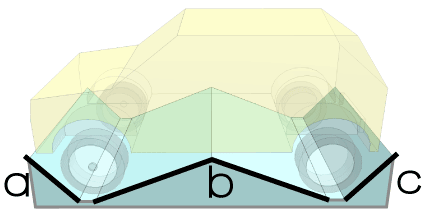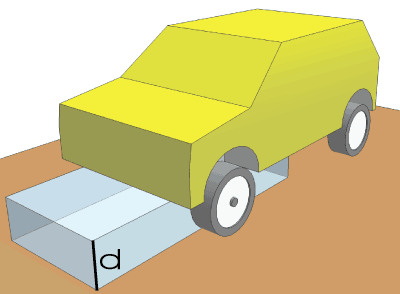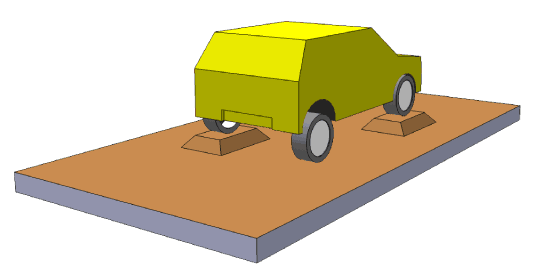Know your
4x4 vehicle
The key to safe driving on any terrain is a robust knowledge of your vehicle and what it can do.
Before you venture off road, equip yourself with a clear mental picture of the underside of your 4x4.
Learn the location of the fuel tank, engine sump, differentials and gearbox. You’ll be less likely to snag them on rocks and other obstacles if you can see them in your mind’s eye.
Memorising some basic stats will help you deal confidently with off-road obstacles. Get to know your vehicle’s height and width, its lowest point, its wading depth and angles.
Get to grips with your vehicle’s on-board technology features.

Approach angle
Is the wheel or nose going to hit the ground first?
Remember: if you have a winch on the front, your approach angle will be reduced.

Ramp angle
When you crest a hill, is the middle of your 4x4 going to ground?

Departure angle
Is the back of your vehicle going to hit the ground?
Remember: if you have a tow bar attached, your departure angle will be reduced.

Low range
Gives you added control.

High range
Gives greater momentum and higher speeds.

4WD
4WD gets more traction than 2WD and ensures stable driving boff-road—on sandy, muddy or slippery surfaces, even if one of the wheels doesn’t have traction.
Off-road vehicle attributes
Getting to know your vehicle is the first step towards being a safe and successful off-road driver. There are various natural attributes of your vehicle which determine the severity of the obstacles you can drive.

Approach, departure and ramp angles
These angles (shown in Diagram) dictate the severity of slopes your vehicle can attempt without damage. The ‘approach’ angle (a) is the angle formed if you draw an imaginary line from the bumper to the bottom of the tyre, and dictates the degree of slope which can be approached without contact with the ground. The ‘ramp’ or ‘ramp over’ (b) angle determines the size of a ramp-like obstacle which can be tackled. The departure angle (c) is the angle at the rear of the car.
Various vehicle accessories can affect the angles – a good example is a tow bar, which tends to protrude into the natural departure angle. >If the departure angle becomes less than the approach angle you might find the rear of the car touches the ground when climbing particularly steep inclines.

Ground clearance
Decent ground clearance is vital if you want to make progress without dragging the body of your car over the ground. Ground clearance is usually determined by measuring to the lowest point on the car which is usually the differentials (if your 4×4 has solid axles).

Suspension travel
Good suspension travel allows all four wheels to remain in contact with the ground for as long as possible – this increases traction and will allow you to progress further before getting stuck.


